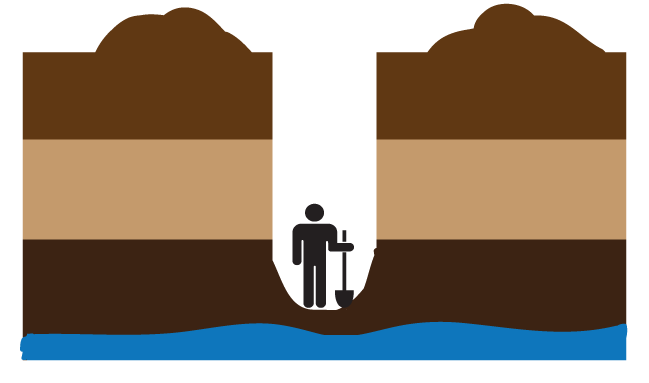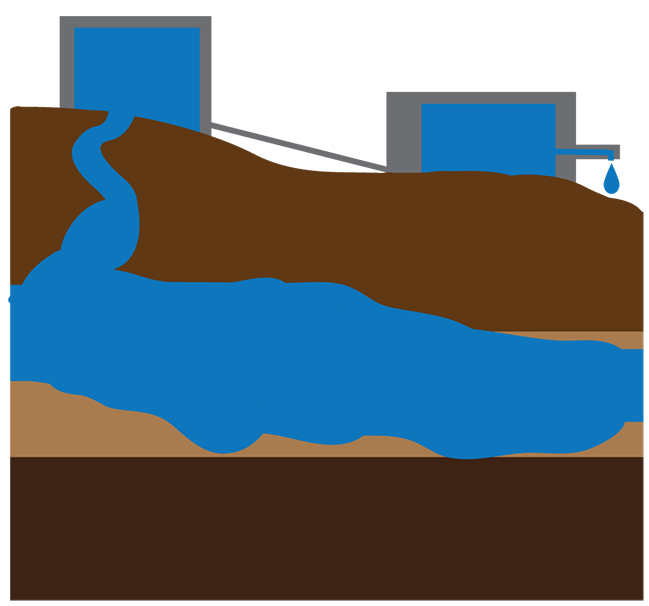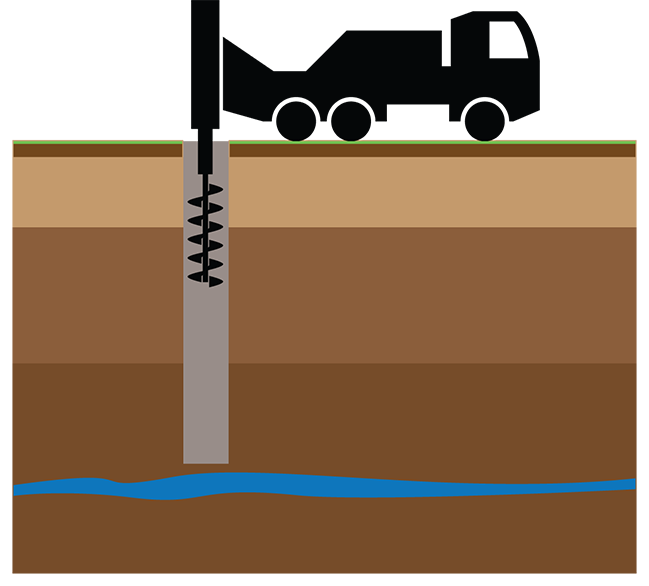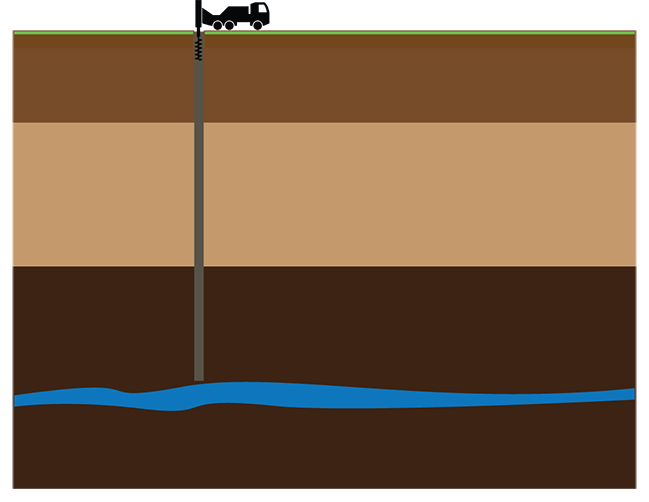
Digging for water
Water to Thrive has four different types of wells to choose from for each water project. Our in-country partners and Ethiopia Project Manager collaborate to determine the best type of well for each community’s needs.
Project Types

Hand-dug well
When a community has a good supply of water near the surface of the ground, a hand-dug well is usually the best project type to construct. With the guidance of a water expert, community members help dig the well from 8 to 15 meters deep. Concrete rings are stacked inside the well to prevent cave-ins, and a filtration system is used along the entire depth of the well shaft. The completed well is covered with a large concrete cap, and a hand pump is installed. This allows community members to pump clean, filtered, and protected water up from the ground.
Spring protection development
Sometimes natural springs provide a continual source of water in a community. The problem is that this otherwise clean, water is contaminated by dirt, bacteria, and bugs, and the people must share the spring with animals. This makes the water dangerous.
In these cases, a spring protection system is developed. The eye of the spring is carefully capped and covered with a large cement protection box. The box protects the water from surface contamination and also contains a natural filtration system of river gravel and sand. The clean, filtered water is then piped to a reservoir where it collects overnight. During the day, the clean water that has been collected is piped to distribution points where community members can collect it.


Shallow borehole well
When there is no spring available and the water is too deep underground for a hand-dug well, a drilling machine is needed to access the water in the deep aquifer. These types of projects are called shallow boreholes, and they utilize drilling rigs to dig to depths of 20-50 meters.
For a shallow borehole, a rig will drill until water is hit. Then a steel casing is inserted into the long well shaft to protect the deep well from collapsing and to prevent contamination of the pure water in the aquifer. A pump is then used to bring this clean, safe water to the surface for communities to use.
Deep borehole well
In some cases, even a borehole of 20-50 meters isn’t deep enough to reach water. In instances like this, heavy equipment and very deep drilling is required. For these cases, we choose a deep borehole well.
Usually drilled to a depth of 50 to 250 meters, deep boreholes are the most difficult and expensive water projects to construct. They require a large team of drillers, and must be fueled by diesel generators or connected to a power grid. However, if drilled into a high-volume aquifer, these deep boreholes can yield a high enough volume of water to serve more than 15,000 people per year.
